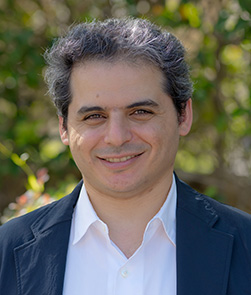Research
Contact
Communications Specialist
Faculty of Engineering
Spencer Engineering Building
Room 2072
Western University
Tel: 519-661-2111 ext. 87015
Email: engineeringcomms@uwo.ca
The Engineer's Impact - Mohamed Zaki
Your inside look at faculty’s research and its effect on society
In this new Q&A series, we’ll feature Western Engineering faculty members to gain a succinct overview of their research, understand its impact on society, and discover intriguing little-known facts.
Meet Civil and Environmental Engineering Assistant Professor Mohamed Zaki.
 Can you describe your research?
Can you describe your research?
My research focuses on advancing sustainable mobility and improving smart transportation infrastructure through innovative technologies. The research incorporates real data analysis and combines formal methods and learning approaches within a human-in-the-loop cyber-physical modeling framework to evaluate road safety and implement a safety-grounded smart mobility infrastructure. This includes designing effective methodologies for cyber-physical systems modeling and the validation of autonomous transportation sensing infrastructure, studying the impact of information technologies in the context of smart mobility (e.g., connected vehicles, V2X, micromobility) and developing pro-active traffic safety evaluations of shared and mixed spaces.
How does your research impact society in everyday life?
Transportation enables the movement of people and goods, links other infrastructures and provides the support needed to build and maintain these infrastructures. Safe and equitable access to transportation infrastructure is critical to the future and the resilience of transportation management to disruptive events is key to a sustainable society. Therefore, tools evaluating the safety and resilience of transportation are urgently needed. Road safety is a primary challenge to an equitable society and developing accurate and low-cost technologies to improve safety will lead to wide-scale technology deployment and remove prohibitive cost barriers to underserved communities. Through its socio-technical-infrastructure systems approach to human mobility, my research is synergistic with vital societal objectives of realizing green, equitable, and resilient smart cities. My research aims to provide a blueprint for developing innovative traffic management that will benefit urban transportation stakeholders and agencies across Canada. It will also support practitioners in their decision-making during emergencies and other resource-intensive events while supporting the National Active Transportation Strategy to improve the sustainability of the transportation network and promote healthier communities.
What’s an interesting, little-known fact related to your research?
My research was shaped by road safety work with vulnerable communities in Downtown Eastside — a neighbourhood in Vancouver, British Columbia, and by evaluating the technology at school zones in the City of Edmonton in the province of Alberta. The research demonstrated the critical need for considering diverse population factors in designing effective traffic safety mitigations. Research on the safety impact of phone distraction generated worldwide public media attention (e.g., CTV news, Treehugger, CBC and New York Times).

